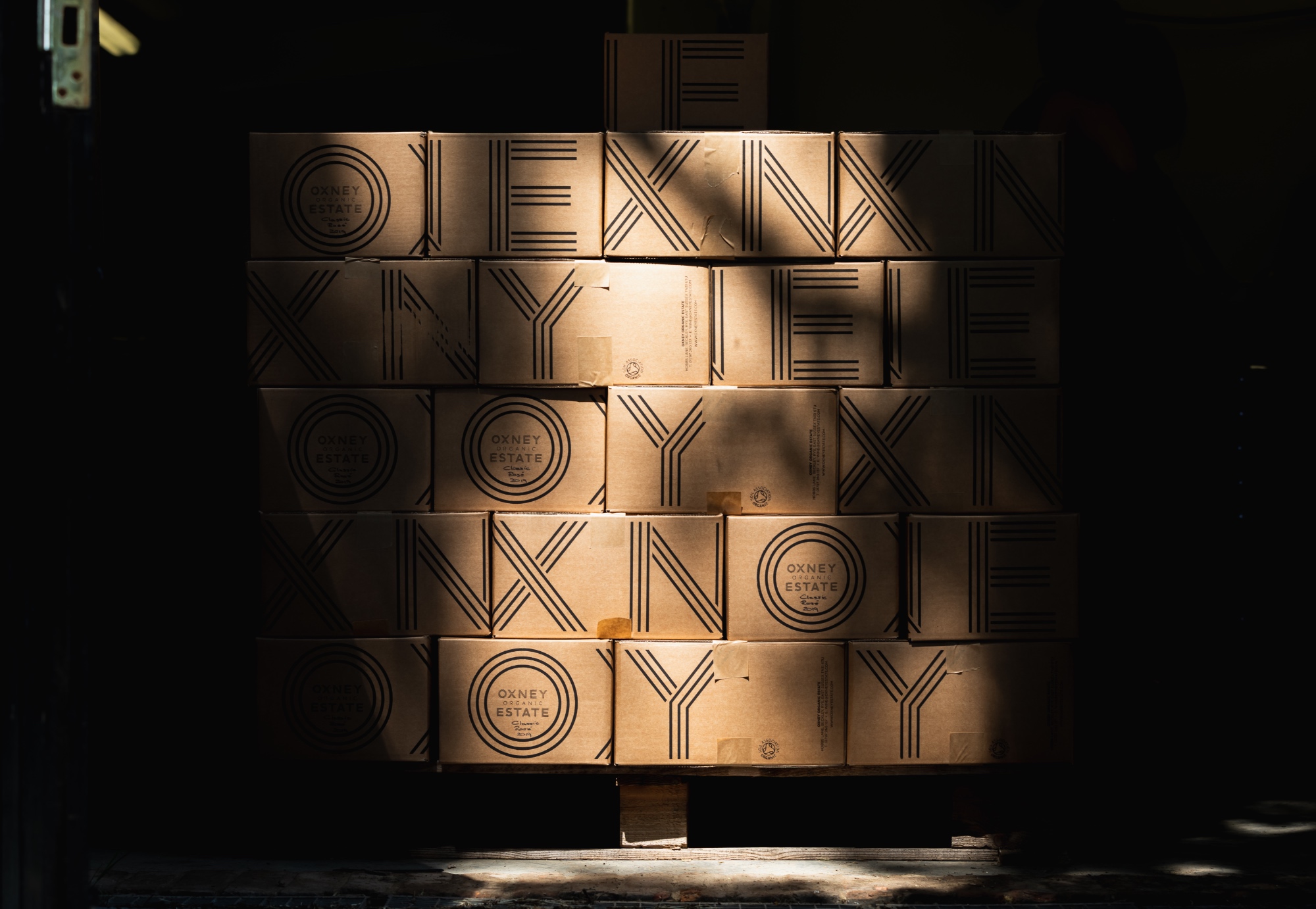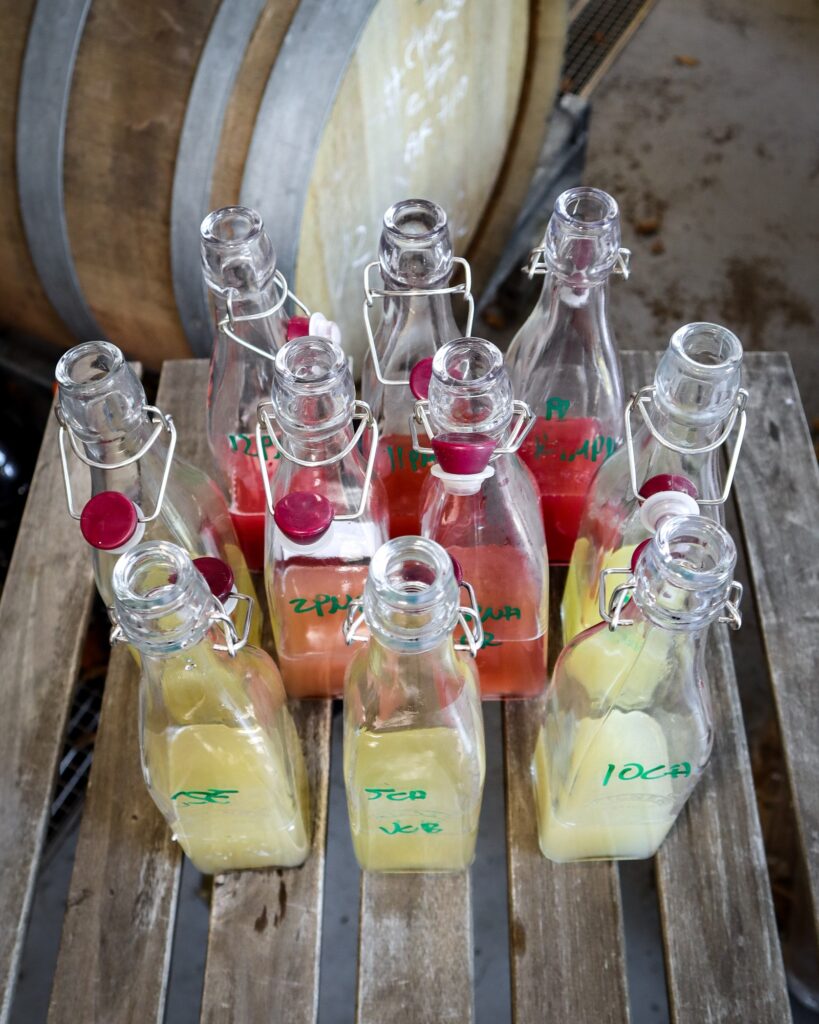Winemaker’s Note #2: Blending

Winemaker’s Note #2: The Art of Blending
By Salvatore Leone, Oxney Winemaker
When it comes to making non-vintage sparkling wines, how do we create a consistent product from an ever-changing kit of parts? This is the question we answer through the art of blending.
In every country, no two wine harvests are the same. This is truer than England than many countries, thanks to our unpredictable climate. Wines from two consecutive vintages can be poles apart… yet when we make sparkling wines, we are looking to achieve consistency. We must have a ‘house style’ so people know what to expect when they buy from us. Blending is how we achieve our house style.
Luckily, like every sparkling wine producer, we are able to use wines from different years to produce our house style. This is what the term ‘non-vintage wines’ means. Where vintage wines say something special about the year the grapes were grown in, non-vintage wines can be made using stored-up base wines from previous years – these are called reserve wines. Blending is the process of combining wines from the most recent vintage with reserves wines, in just the right qualities to produce our house style.
Some of the components of the Oxney house style are fresh English fruit, lees ageing (which gives yeasty brioche notes), malolactic conversion (which gives a rich, rounded mouthfeel) and the hallmark of all great English sparkling wines, crisp refreshing acidity. These components are true to our terroir and they apply across the two non-vintage wines we make, Oxney Estate NV and Oxney Estate Rosé NV.
The goal with any house style is consistency in every release. We could make our Estate wines 10 years apart and if you had a time machine or a very good taste memory, you should not be able to tell the difference when you open the bottles.
Blending is what allows us to achieve this consistency. The use of wines from different vintages allows the same expression of the multiple faces of the same land over time. We look to achieve the same balance and elegance: for me the two most important factors.
Balance is the combination of what we smell and the tactile sensations of acidity, phenols, body, minerality and mouthfeel. We find elegance when we manage to successfully integrate all of these aspects, so that they feel woven together like a tapestry, not a mess of unconnected threads in the glass.
This is why we blend. But how does it actually work? We call blending an art because it is all about tasting, testing, trying, retrying. Building our sensory knowledge of every element and how they may interact as we combine them, understanding how they will all come together to achieve the destination we want to reach. Knowing this destination is the true essence of blending. It is the map we create to get there.
We want as many options as possible to help us on our journey. So we bottle samples from every available tank or barrel and put them into the blending trial. To take a step back, it is important to say that the wines must be ready for blending. When they are too young, they change frequently. Only as they settle and begin to mature are they predictable enough to know what we are dealing with. For new base wines contributing to our NV sparkling wines, this usually takes a minimum of three months after harvest, hence why we are blending now.
Once we have all of our base wines on the table, we taste each component individually so we can create a picture in our mind of what we have. These wines are the players in our team… then the game starts.
Every player brings different skills. We have already maximised the number of players through our work in the vineyard and the winery. At harvest we pick different varieties, different clones, different vineyard blocks on different days, fermenting them all separately to create so many components. We also alter our fermentation practices, using different types of yeast, different vessels, different temperatures. Only some will undergo malolactic conversion, so we have control over the level and type of acidity in our final blend. Blending takes place in February/March but in truth the work starts the previous October.
From there, we test the ability of our players over and over, working out the proportions and combinations that achieve our precise goal. We try, we taste, we select. But for our NV wines we cannot judge entirely what is in the glass. Every wine evolves over time but sparkling wines undergo evolutionary leaps, both in the second fermentation and in ageing. As we blend, we have to see the base wines in perspective.
How do we know if our blend will evolve in the right direction? Only experience can tell us. We must rely on our memory bank of wines and how they change. We can’t be sure but with every trial we can become more accurate.
At Oxney, our low-intervention approach to winemaking gives us an advantage in understanding this evolution. We don’t filter our wines and we don’t fine them if we can possibly avoid it. As a result, the base wines will actually change less from the blending trial to the final wine. The less we interfere, the closer we are to our wines. In a process as crucial and finely balanced as blending, even these small gains in predictability serve us well in achieving the consistent quality we always strive for.

